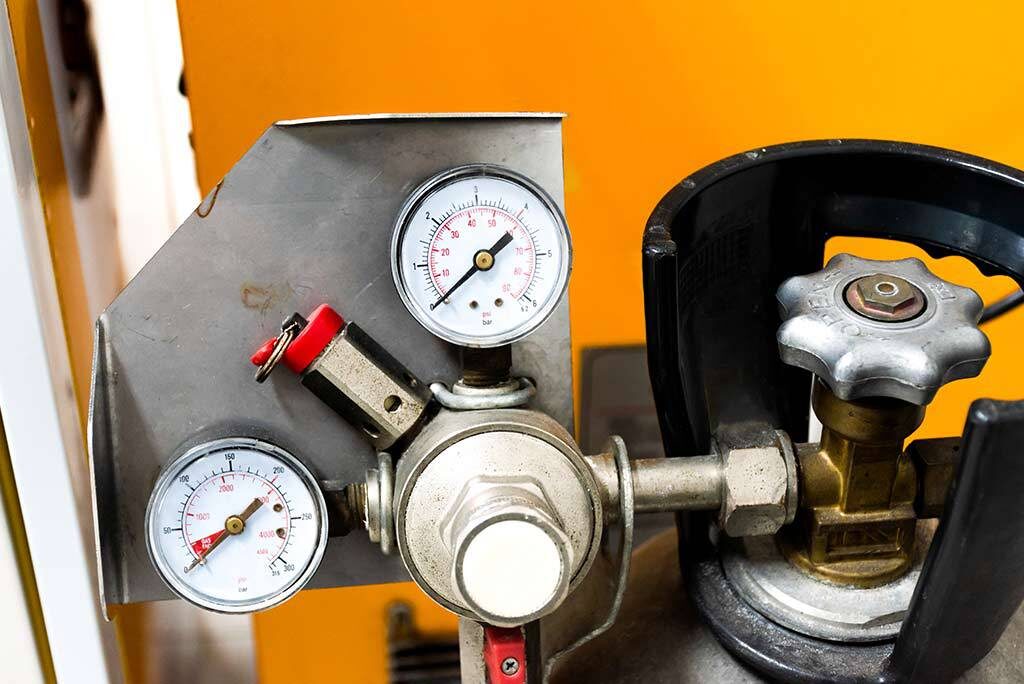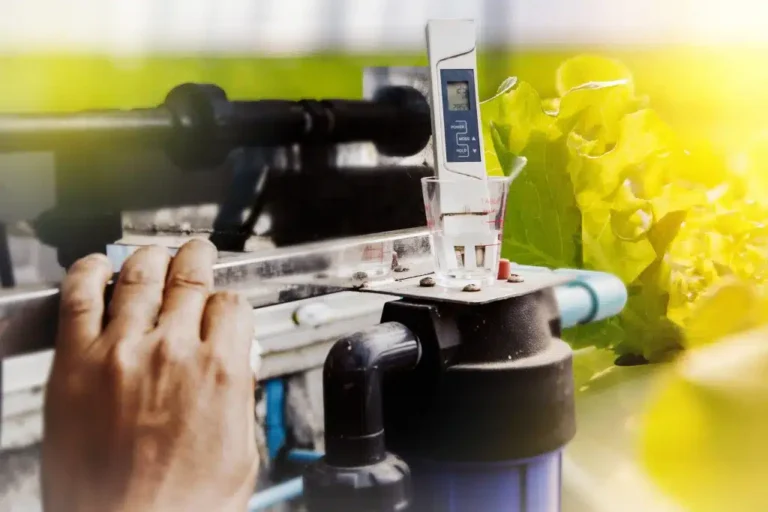Adding carbon dioxide (CO2) to a grow tent can accelerate plant growth as it’s a vital element in photosynthesis. Recommended levels for optimal growth typically range between 1000-1500 ppm, higher than the atmospheric 400 ppm. Monitoring CO2 levels using a reliable meter is crucial to prevent harmful concentrations. Adequate ventilation is necessary to maintain a balanced environment and avoid CO2 buildup, while ensuring other factors like light, temperature, humidity, and nutrients are optimized for maximum effectiveness. CO2 supplementation may require additional equipment such as tanks, regulators, controllers, or generators, so weighing the cost-benefit is important.
Methods include CO2 tanks, generators, or specialized products, but safety precautions are essential due to the potential hazards of high CO2 concentrations to both plants and humans. Consulting with experienced growers or professionals is advised for guidance before implementing CO2 supplementation.
How to Optimize CO2 Levels in Grow Tents?

Optimizing CO2 levels in grow tents can significantly enhance plant growth and yield. Here are some ways to effectively manage and optimize CO2 levels:
Measure CO2 levels: Invest in a reliable CO2 monitor or meter to regularly measure the concentration of CO2 in the grow tent. Aim for levels between 1000-1500 parts per million (ppm) during the daylight/active growth period.
Natural ventilation: Ensure proper ventilation by exchanging air with the outside environment. This helps maintain a healthy balance of CO2. Fresh air intake and exhaust systems can regulate CO2 levels and prevent them from becoming too high or too low.
Supplemental CO2: Consider using CO2 generators or enrichment systems to boost CO2 levels within the grow tent. CO2 tanks or generators release controlled amounts of CO2, enhancing plant growth during the photosynthesis process.
Timing CO2 enrichment: Provide additional CO2 during the light hours when plants actively photosynthesize. This optimization maximizes the efficiency of CO2 utilization.
Maintain temperature and humidity: Optimal temperature and humidity levels in the grow tent facilitate better CO2 absorption and utilization by plants. CO2 absorption rates can decrease if the temperature or humidity is too high or low.
Avoid excess CO2: Too much CO2 can be harmful to plants and humans. Higher concentrations (above 2000 ppm) can negatively impact plant growth and create health risks. Ensure a balanced approach and avoid excessive CO2 supplementation.
Monitor and adjust: Regularly monitor CO2 levels, especially when using enrichment systems. Adjust the supplementation rate as needed to maintain optimal concentrations based on plant growth stages.
Seal the grow tent properly: Check for any leaks or gaps in the grow tent that might allow CO2 to escape. Properly sealed tents help maintain the desired CO2 levels.
Remember, while optimizing CO2 levels is crucial for plant growth, it’s equally important to maintain a balanced environment. Regular monitoring and adjustments based on plant needs and growth stages are key to achieving optimal CO2 levels in grow tents.
What Influences Effective CO2 Supplementation in Tents?
Balancing these factors and maintaining a well-controlled environment tailored to the specific needs of the plants in the grow tent is crucial for effective CO2 supplementation and optimal plant growth.
CO2 Levels: Monitoring and maintaining the appropriate CO2 levels (around 1000-1500 ppm during the active growth phase) is crucial. Regularly measure CO2 concentrations to ensure they are within the desired range.
Ventilation: Proper ventilation is essential for effective CO2 supplementation. Ensure adequate airflow and exchange with the outside environment to prevent CO2 buildup and allow fresh air to enter the grow tent.
Sealing and Insulation: A well-sealed grow tent helps maintain CO2 levels by preventing leaks and ensuring that the supplemented CO2 stays within the environment, maximizing its effectiveness.
CO2 Distribution: Proper distribution of CO2 within the grow tent is important. Fans or oscillating fans can help circulate the air and ensure even distribution of CO2 to all parts of the tent where plants are growing.
Temperature and Humidity: Maintaining optimal temperature and humidity levels enhances CO2 absorption and utilization by plants. High temperatures can increase the rate of photosynthesis, while appropriate humidity ensures efficient stomatal opening for CO2 intake.
Plant Density and Size: The number and size of plants in the grow tent influence CO2 requirements. Larger and more densely packed plants will likely require more CO2 for optimal growth compared to smaller or less dense crops.
Light Intensity: CO2 supplementation is most effective when coupled with sufficient light. Higher light intensity usually leads to increased photosynthesis, enhancing the plant’s ability to utilize the supplemented CO2.
Timing of CO2 Enrichment: Providing additional CO2 during the daylight or active growth phase maximizes its effectiveness. Plants actively photosynthesize during these periods, utilizing the supplemented CO2 more efficiently.
CO2 Source: The method of CO2 supplementation (using tanks, generators, or natural methods) can impact its effectiveness. Ensure the chosen method suits the size of the grow space and provides a consistent and controlled release of CO2.
Monitoring and Adjustment: Regularly monitor CO2 levels and plant responses to supplementation. Adjust the supplementation rate as needed based on plant growth stages, environmental changes, and CO2 concentration measurements.
How to Select CO2 Supplementation Methods?

Selecting the right CO2 supplementation method for a grow tent depends on various factors such as the tent size, budget, level of control desired, and personal preferences. Here are different methods of CO2 supplementation and considerations for selecting them:
CO2 Tanks or Bottles
Using compressed CO2 tanks or bottles equipped with a regulator and a timer to release controlled amounts of CO2 into the grow tent.
Suitable for larger grow spaces due to their ability to provide a consistent and controlled release of CO2. Requires regular refilling or replacement of CO2 tanks.
CO2 Generators
These devices produce CO2 by burning natural gas, propane, or other fuels. They emit CO2 and heat as byproducts.
Effective for medium to large grow spaces. They require proper ventilation due to the heat generated and produce water vapor, which may affect humidity levels. Regular maintenance is necessary to ensure safety and optimal performance.
CO2 Bags or Pads
Passive systems that produce CO2 through microbial action within the bag or pad. They release CO2 slowly over time.
Suitable for small to medium-sized grow spaces. These systems are low-maintenance and easy to use but might not provide high levels of CO2 compared to other methods.
Natural CO2 Enrichment
Utilizing methods like mushroom cultivation, fermenting organic materials, or using yeast-based systems to produce CO2 as a natural byproduct.
These methods can be cost-effective and environmentally friendly but might not provide precise control over CO2 levels. They are more suitable for smaller setups.
Electronic CO2 Controllers
Using electronic controllers to regulate the release of CO2 from tanks or generators based on programmed settings and measurements from CO2 sensors.
Provides precise control over CO2 levels, ensuring consistency and optimization. Works well with tanks, generators, or other CO2 supplementation methods.
When selecting a CO2 supplementation method, consider the following factors
- Grow Space Size: Different methods are suitable for different tent sizes. Ensure the chosen method can adequately supply CO2 for the space available.
- Cost and Budget: Consider initial setup costs, ongoing expenses (such as refilling tanks or maintenance), and the long-term affordability of the chosen method.
- Control and Precision: Some methods offer more precise control over CO2 levels than others. Consider the level of control needed for your specific plants and growth conditions.
- Ease of Use and Maintenance: Evaluate the simplicity of installation, operation, and maintenance required for the chosen CO2 supplementation method.
Ultimately, choose a CO2 supplementation method that aligns with the specific needs of your grow tent, considering factors such as size, budget, control requirements, and ease of use.
FAQ’s
Does CO2 speed up flowering?
Increased CO2 levels can potentially promote faster growth and flowering in plants by enhancing photosynthesis, but other factors also play a role.
Does CO2 fatten buds?
Elevated CO2 levels may contribute to increased biomass production, potentially resulting in larger and denser buds during the flowering stage.
Does CO2 make bigger buds?
Adequate CO2 levels can support enhanced plant growth, which may result in bigger and more robust buds, especially when combined with other optimal growing conditions.
Is CO2 good for flowering?
CO2 supplementation during flowering can positively impact plant growth and potentially increase yield, given it’s within optimal ranges and combined with other essential factors.
Can I use CO2 with LED lights?
Yes, CO2 supplementation can be used in conjunction with LED lights. LED lighting systems often provide a more energy-efficient way to grow plants and can benefit from increased CO2 levels for improved photosynthesis.
Does CO2 shorten flowering time?
While increased CO2 levels can enhance plant growth and potentially speed up some growth processes, it might not significantly shorten the overall flowering time in all cases, as various factors influence flowering duration.
Conclusion
In wrapping up, adding carbon dioxide (CO2) to your grow tent is crucial for boosting plant growth. Remember, ensuring optimal CO2 levels between 1000-1500 ppm is key, but monitoring this with a reliable meter is just as important to avoid harmful concentrations. Pay attention to ventilation and balance it with factors like light, temperature, and nutrients for best results.
Choose CO2 supplementation methods wisely based on your needs and always prioritize safety by consulting experts or experienced growers before making any changes. Overall, CO2 can be a game-changer for plant growth in your grow tent, so get it right for healthier and more abundant plants.

